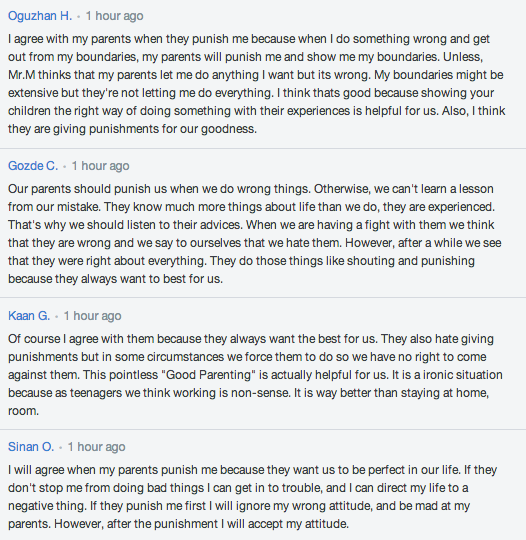My long time EFL teaching colleague (different school) and Scots freen (different region), Gordon Dobie (A West Coaster, but he canny help thon), shared with me an activity for the practice and production of REPORTED SPEECH with my students. He uses it himself, and his students claim it is the best thing they do all year. I immediately wanted some of the action and he explained how it worked. So, I informed Brentson, my colleague, and we made a BLENDSPACE tutorial for the students and also we wanted to share with you all. Of course, the tutorial is self explanatory, but I would like to break it down a bit more on this platform so that you can see it at a glance without moving away from here.
STAGE ONE
Get your students to think of their favorite song or album of all time (with young teens this can be in an instant for forever depending how fickle they are being. So, give them a time limit of 5 minutes only.
STAGE TWO
Tell them to open their computers and go to www.amazon.com or www.amazon.co.uk to find their song or album they wish to read the reviews about. There they will see on the left (as above pic shows) 1 - 5 star ratings from which the students can choose. They should read the 5-Star review first so that they feel good about their own favorite matching someone else's opinion.
STAGE THREE
The considerations of EFL are part and parcel of our extensive planning, so vocabulary is tantemount to success and growth for the students. Monsieur Dobie is a huge (I don't mean his belly) proponent of extensive vocabulary instruction, and I strongly support him in this. So, you will ask them to identify as many song/artist/album new examples of language about music itself. It is surprising how many terms we take as granted being native speakers of the language. Those items are highlighted in yellow above.
BTW, this is where ICT really comes in handy. The students take a snip of the review from the website then convert the snip to a pdf or ebook page or insert it into a word document so they can highlight the text.
After they find the new vocabulary and record it for use later, they then find the opinions and lexical cues for use in the reported speech activity itself. These are highlighted in torquoise or light blue above.
STAGE FOUR
The students then read the one star review, which will undoubtedly keep them engaged, since the reviewer is nothing but negative of the students' favourite song or album. You can see from the image that the process for vocabulary and opinions is exactly the same.
STAGE FIVE
Now the students start to prepare for the final stage of the activity. This involves GOOGLE DRIVE (of course), as we always like to get our students up to the board to report their own findings. But before that, you give them reporting verbs suitable for written work. Since we have instilled in them the use of SAY & TELL as the primary verbs in speech, it is important to also share with the students some more appropriate verbs for reporting comments in writing. So, the list above, although not exhaustive, is a good enough size to get started.
The student reports to his/her friend who then checks for authenticity in the original review. They practice these before transferring them to their Google Drive ppp.
STAGE SIX
After the students have practised the single reported statements, and shared new-found "music" vocabulary with their friends, you will now have them write in paragraph form what they thought of their 1 & 5 star reviews/ers (like above). I believe this is better than single response reported statements at this time, as they have done plenty during the rules and drilling stages. So, it makes it much more authentic to use the reported speech in a wee report/opinion piece for presenting to the class. Point of note: there is absolutely no question that when you get students to write in paragraph length chunks there are far less grammar and syntax issues, compared to single statemenst out of context (but you knew that of course:-)
STAGE SEVEN
STAGE SEVEN
Here is a video of one student, Sinan, who allowed us to video tape his presentation. He is a student who embraces learning and loves to engage in everything we throw at him. Below his video there are three snapshots of another student, Gözde, who probably has the strongest English in our 2013/14 group, overall. She actually approaches her lessons with classic Turkish pragmatism, but the difference is she likes to complete everything by herself without cutting any corners; which is unusual for a 14-15 year old girl :-)
I would like to finish this lengthy post by saying thanks to Gordon Dobie for his heads up on the quality activity. The fundementals are pretty much the same as Gordon's original, but by changing it to allow more ICT and grammar into the activity we have broadened it past Gordon's vocabulary and reading outcomes. However, that is the way we do things in our program, and the kids have become used to it. That does not mean it is better, but it is always good to do things that the students are used to; afterall, if you try to do too much in a different way, they simply rebel.



















































